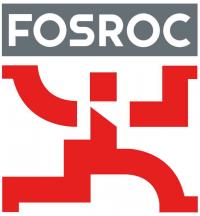DEKGUARD W

Water based acrylic copolymer protective and decorative coating for concrete and masonry.
Uses:
To protect atmospherically exposed reinforced concrete structures, cementitious substrates and masonry from aggressive elements, weathering and rain. Dekguard W is suitable for use on all types of structures, including those in coastal environments. It is equally suitable for new and existing structures. Dekguard W is a component of Fosroc’s Renderoc system of concrete reinstatement.
Advantages:
- Excellent barrier to carbon dioxide, chloride ions,oxygen and water
- Allows water vapour to escape from the structure High resistance to the effects of long-term weathering and durable in all climatic conditions
- Water-based
- Wide range of decorative colours
Description:
The Dekguard W system comprises a single component, penetrating silane-siloxane primer and a single component pigmented coating, both ready for immediate site use. A range of reactive primers are available to suit substrate porosity and site conditions and inhibit the passage of water and waterborne contaminants.
Standards Compliance:
Dekguard Elastic has been approved by the British Board of Fire tested to BS 476, Pt 6: 1987.
Spread of flame - Class 0.
Fire tested to BS 476, Pt 7: 1987. Spread of flame - Class 1. BS 476, Pt 7: 1987. Spread of flame - Class 1.
Fire tested to BS 476, Pt 6: 1989. Propagation index I — 0.0. Sub index i1 — 0.0. Building Regulations Rating — Class 0.
Specification clauses:
The protective coating shall comprise a penetrating silane-siloxane primer and Dekguard W, a single component aliphatic acrylic coating. The total dry film thickness of the coating shall be not less than 150 microns and shall be capable of providing carbon dioxide diffusion resistance equivalent to not less than 279 mm of 30 N/mm2 concrete cover (by the Taywood method).
It shall provide a reduction in chloride ion penetration not less than 84% (by the Aston University Diffusion Cell method) and no chloride ion diffusion after 600 days (by the Taywood method). It must exhibit a water vapour transmission resistance (SD) of not more than 0.066 metres (by the Taywood method) at a dry film thickness of 150 microns
Properties:
The values obtained are for the Dekguard W system applied in two coats at the minimum recommended application rate.
Volume solids Dekguard W: 41% Carbon dioxide diffusion resistance (Taywood method). Equivalent thickness of air Initial: 133 metres
After 2000 hours QUV: 91 metres.
Equivalent thickness of 30 N/mm² concrete cover (Taywood method): 279 mm
Water vapour diffusion resistance SD 0.066 m @ (Taywood method): 50 microns dft
Reduction in chloride ion penetration when primer is used
(Aston University Diffusion Cell method): > 84%
Fire testing (BS 476, Pt 7: 1987) Class 1
Spread of flame:
Fosroc Dekguard W / Anti-carbonation coatings
Concrete Renovations - Concrete Repair Specialists

